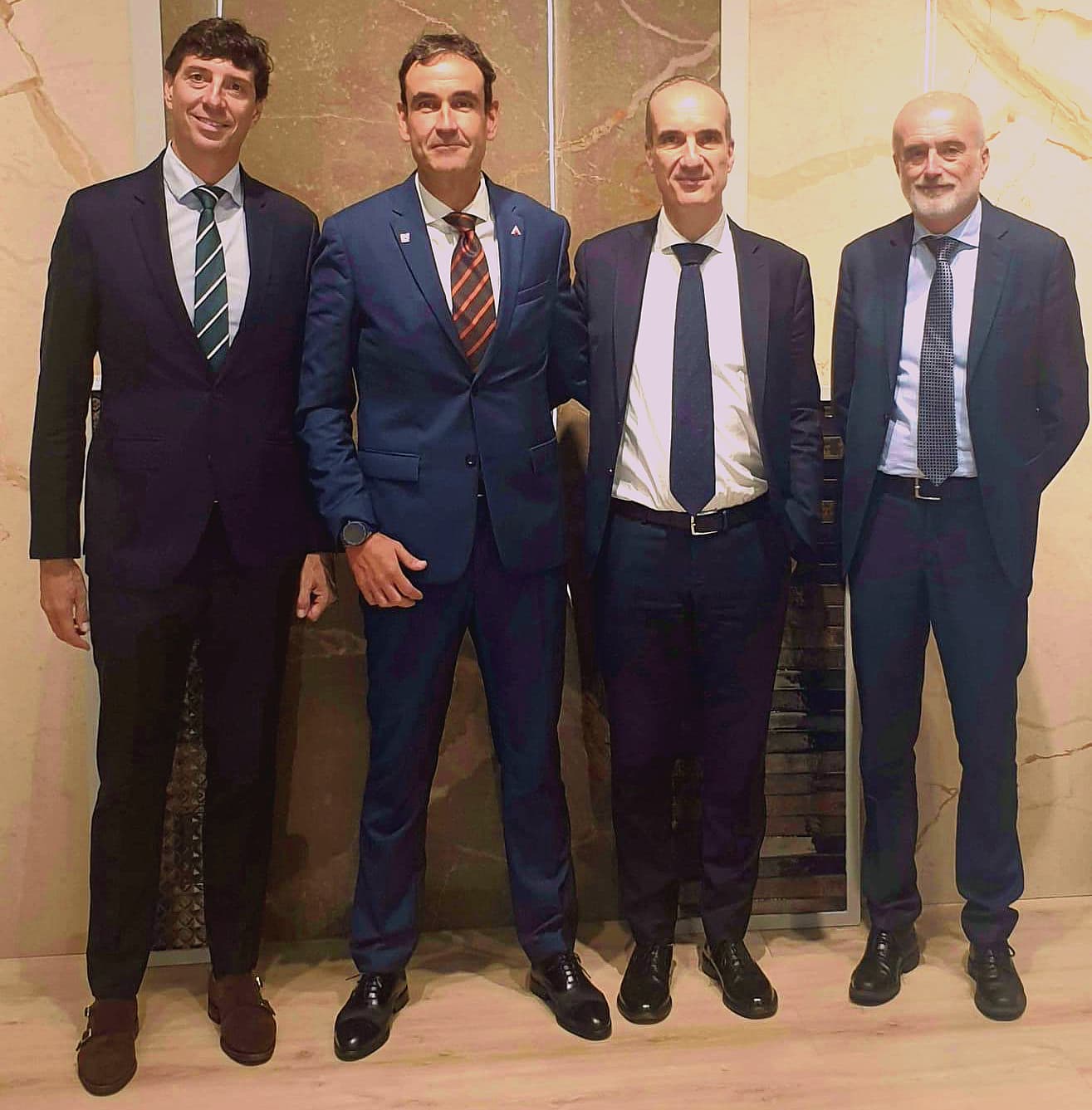ANFFECC and CERAMICOLOR express concern over regulatory proliferation and geopolitical and trade uncertainty
The European frits and enamels industry highlights the need for the EU to safeguard European industrial interests in light of current geopolitical and environmental challenges.

Bologna, 26 September 2025 – The Spanish and Italian associations of manufacturers of ceramic frits, enamels, and colors held their traditional meeting at Cersaie 2025. The discussion focused on the main concerns currently affecting the sector: excessive EU regulation, geopolitical and trade uncertainty, and the need to ensure a balanced environmental protection framework.
ANFFECC President Fernando Fabra and Secretary General Manuel Breva met with Ceramicolor President Pierluigi Ghirelli and Secretary General Giuseppe Abello to exchange views and coordinate common positions. Both associations agreed that the sector is showing a slight recovery in markets, although difficulties persist due to global instability and increasingly strict regulatory conditions.
At the regulatory level, growing concern was expressed over the proliferation of European legislation, which in many cases imposes additional burdens on an industry that already complies with environmental and administrative standards far stricter than those in competing countries. The EU is urged to adopt a more realistic approach that allows progress in sustainability without compromising the profitability and viability of companies, in order to maintain industrial activity in Europe.
The international trade situation was another key topic. Tensions from U.S. tariff policy, the rise of low-cost producers in countries such as India, and market volatility are creating an uncertain environment that threatens the external competitiveness of Europe’s frit and enamel producers.
In this context, both associations discussed potential joint collaboration in ongoing antidumping procedures concerning critical raw materials, such as the current case on barium carbonate, which directly affects sector companies, with the aim of ensuringfair competition conditions.
Finally, ANFFECC and Ceramicolor reaffirmed their commitment to decarbonization and environmental protection, emphasizing that any European measure must beproportionate and technologically feasible, and accompanied by support mechanisms that allow companies to adapt without jeopardizing their future.
Manuel Breva, Secretary General of ANFFECC, stated that the meeting with Ceramicolor at Cersaie “reinforces a joint position in the face of the major challenges confronting the frit and enamel industry, as we share the concern over the excessive EU regulatory burden, which could endanger the competitiveness of our companies if not adapted to the technological and economic realities of the sector.
“Geopolitical and trade instability adds uncertainty to our exports, with tariff tensions and increasingly aggressive international competition,” he added. “In this context, it is essential for the EU to defend its industry against unfair practices andfirmly support a sustainable transition towards decarbonization.”
Finally, Breva stressed that cooperation between ANFFECC and Ceramicolor “is key to conveying to European institutions that we are fully committed to environmental protection, but we need a balanced and viable framework that ensures the future of our companies and the thousands of jobs they generate across Europe.”